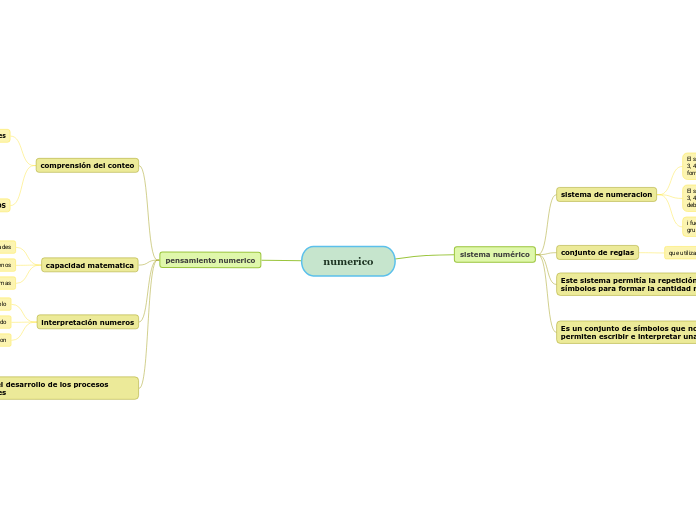by LIZETH KATHERINE IPIALES REINA 4 years ago
231
numerico
El texto discute los sistemas de numeración, destacando cómo diferentes bases numéricas, como las de base 6 y base 9, utilizan un conjunto específico de símbolos para representar cantidades.

by LIZETH KATHERINE IPIALES REINA 4 years ago
231

More like this
Tenses demonstrate the time of actions centered around the subject of the sentence. These actions are called verbs and change according to tenses.
There are four Future tenses:
Future Perfect Simple is used for:
Some adverbs used with Past Perfect Continuous for future actions:
Structure:
Will + Subject + Have Been + Verb-ING
e.g. How long will they be working on that project next week?
Structure:
Subject + Won’t Have Been + Verb-ING
e.g. They won’t have been working on that project for two years next week.
Structure:
Subject + Will Have Been + Verb-ING
e.g. They will have been working on that project for two years next week.
Future Perfect Simple is used for:
Adverb used with Future Continuous:
Structure:
Will + Subject + Have + Past Participle?
e.g. Will you have met your colleague by this time tomorrow?
Structure:
Subject + Won’t Have + Past Participle
e.g. I won’t have met my friend form United States by this time tomorrow.
Structure:
Subject + Will Have + Past Participle
e.g. I will have met my friend form United States by this time tomorrow.
Future Continuous is used:
Adverb used with Future Continuous:
Structure:
Will + Subject + Be +Verb-ING?
e.g. Will you be having fun at the party?
Structure:
Subject + Won’t Be + Verb-ING
e.g. He won’t be having fun at the party.
Structure:
Subject + Will Be + Verb-ING
e.g. You will be having fun at the party.
Future Simple is used:
'Going to' Future is used:
Some adverbs used with 'Going to' Future:
magnitudes
Structure:
BE + Subject + going to + Infinitive Form of Verb?
e.g. Are you going to read the whole book over the weekend?
pensamiento metrico
Structure:
Subject + BE not + going to + Infinitive Form of Verb
e.g. He isn't going to spend his vacation in Hawaii.
PROCESOS GENERALES RELATIVOS
Structure:
Subject + BE (am/is/are) + going to + Infinitive Form of Verb
e.g. She’s going to be a professional dancer when she grows up.
Future Simple with 'will'' is used:
Some adverbs used with Future Simple:
Hacer cómputos de manera fluida y hacer estimaciones razonables.
Structure:
Will + Subject + V1(First Form of Verb)?
e.g. Will you see Mary when she comes back from Denmark?
Comprender el significado de las operaciones y como se relacionan unas con otras.
Structure:
Subject + Won’t (will not) + V1(First Form of Verb)
e.g. You won’t see Mary when she comes back from Denmark.
Comprender los números, las formas de representarlos, las relaciones entre ellos y los sistemas numéricos
Structure:
Subject + Will + V1(First Form of Verb)
e.g. I will see Mary when she comes back from Denmark.
There are four Present tenses:
Present Perfect Continuous is used:
Some adverbs used with Present Perfect Continuous:
Structure:
Have/ has + Subject + been Verb-ING?
e.g. How long has he been learning German?
Structure:
Subject + haven’t/hasn’t been + Verb-ING
e.g. She hasn’t been playing tennis for a long time.
Structure:
Subject + have/ has been + Verb-ING
e.g. They have been learning French for two years.
Present Perfect is used for:
Some adverbs used with Present Perfect:
Structure:
Subject + haven’t (have not)/ hasn’t (has not) + Past Participle
e.g. She hasn’t finished the letter.
Structure:
Subject + have/ has + Past Participle (3rd Form of the Verb)
e.g. She has finished the letter.
Present Continuous is used to indicate the ongoing time (now).
Some adverbs used with Present Continuous:
Structure:
Subject + BE (am/is/are) + Verb-ING
e.g. You are eating now.
empleando la menor cantidad de palabras y símbolos. inmediatamente superior.
Type in your own examples or you can also choose from the examples below.
Form of verb 'to be':
Form of verb 'to have':
Present Simple is used for:
Some adverbs used with Present Simple:
Structure:
Do + Subject (I, You, We, They)+ V1 (First Form of Verb)?
Does + Subject (He, She, It)+V1 (First Form of Verb)?
e.g. Where does he work?
Structure:
Subject (I, You, We, They) + do not / don’t + V1 (First Form of Verb)
Subject (He, She, It) + does not / doesn’t + V1 (First Form of Verb)
e.g. He doesn’t work in a bank.
Structure:
Subject (I, You, We, They) + V1(First Form of Verb)
e.g. I usually go jogging at weekends.
Subject (He, She, It)+ V1(First Form of Verb) + s/es
e.g. She writes every day.